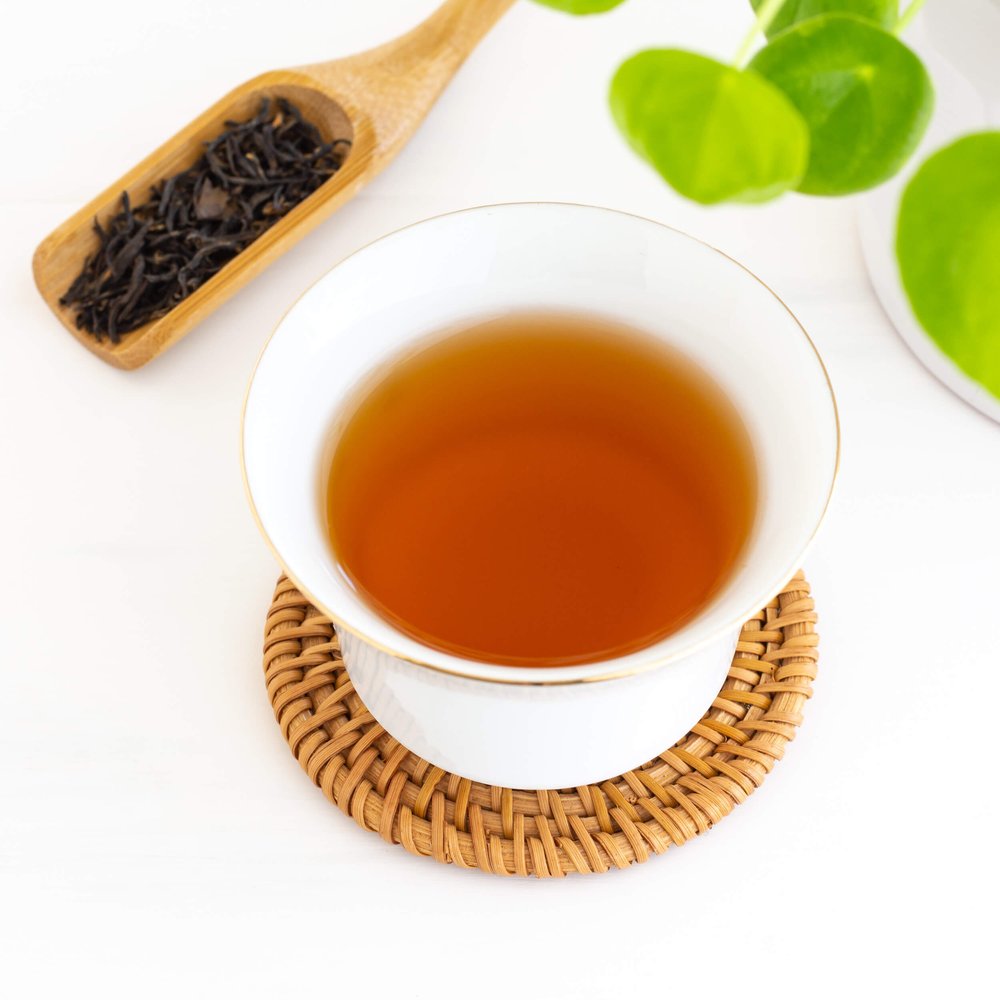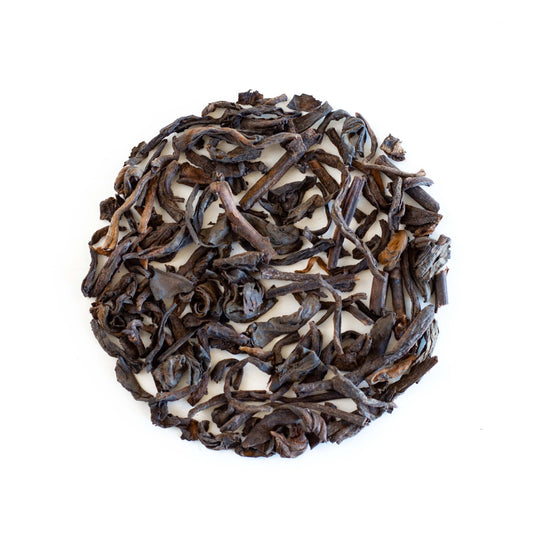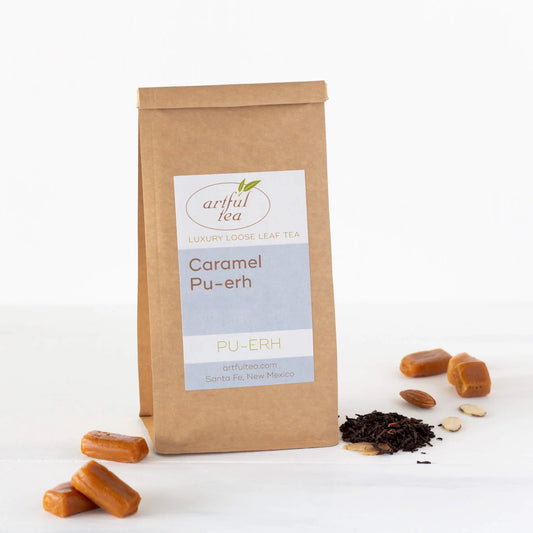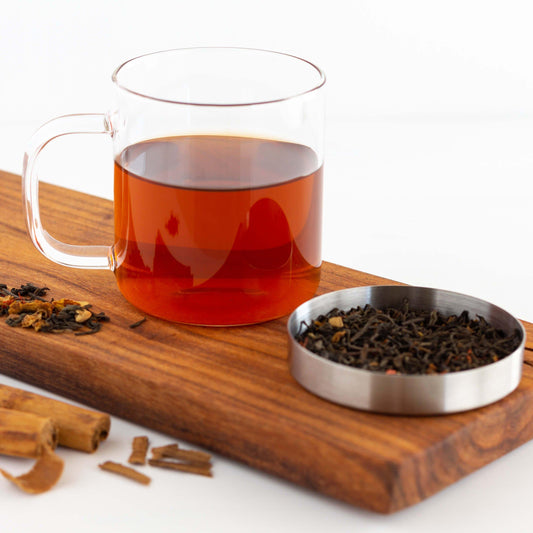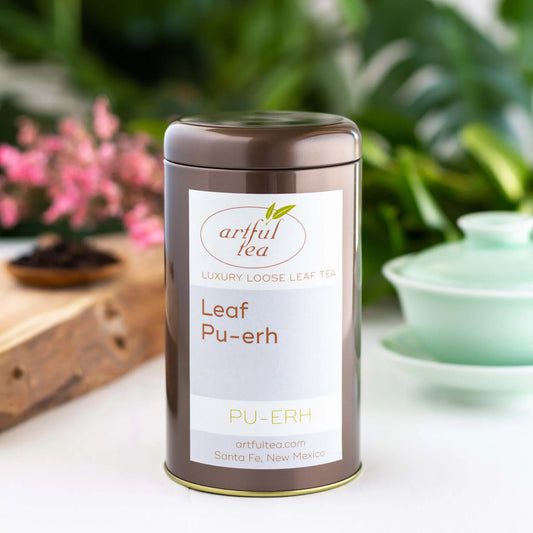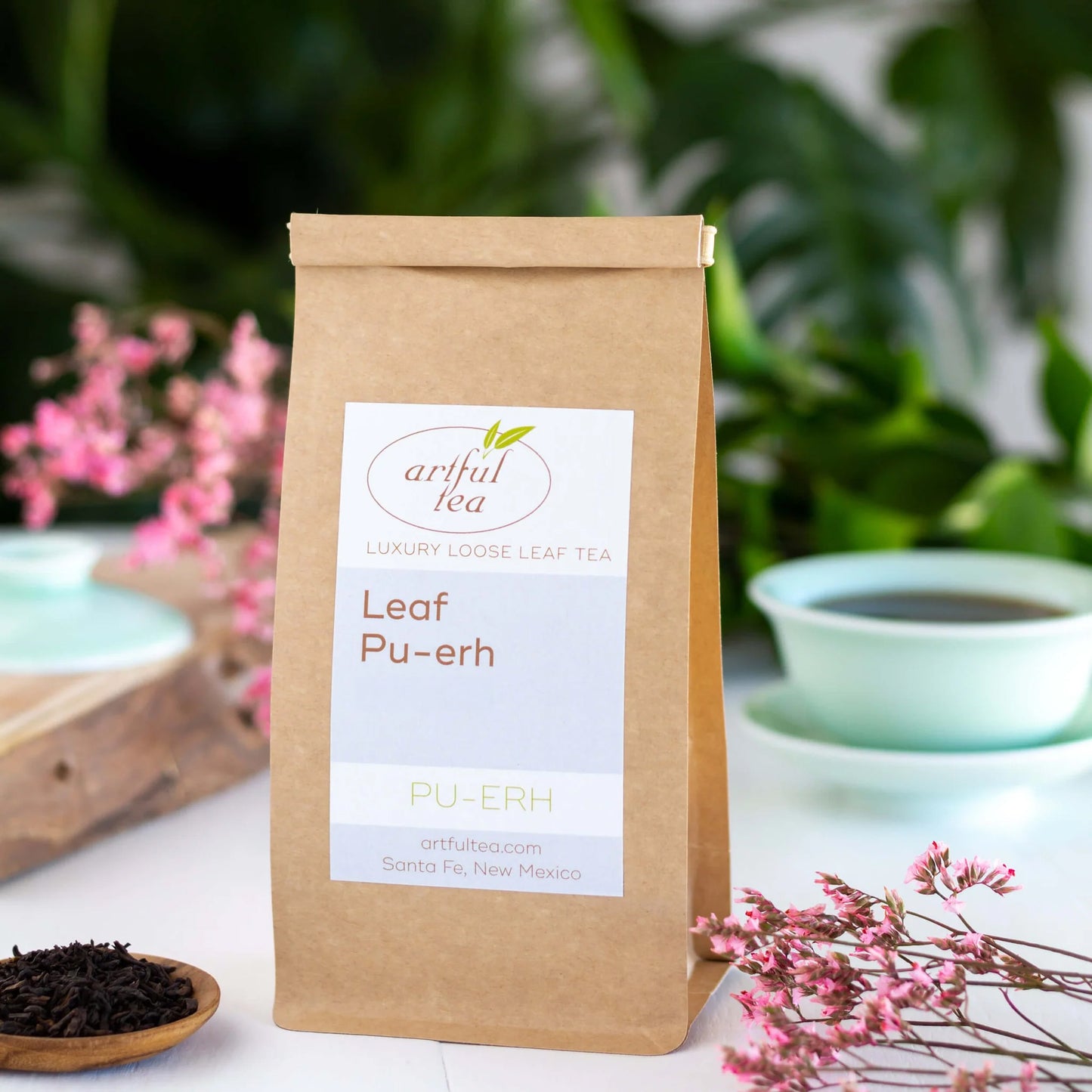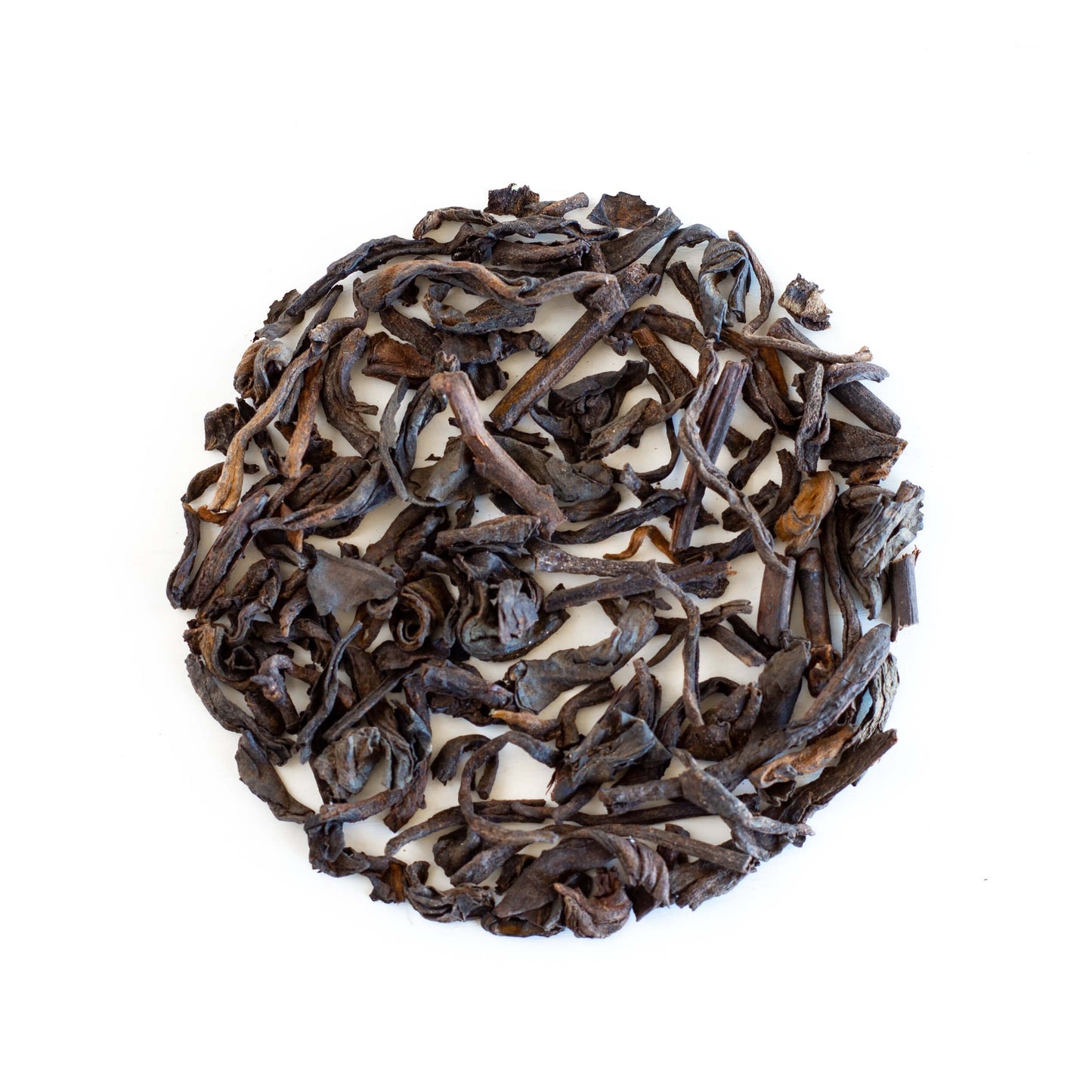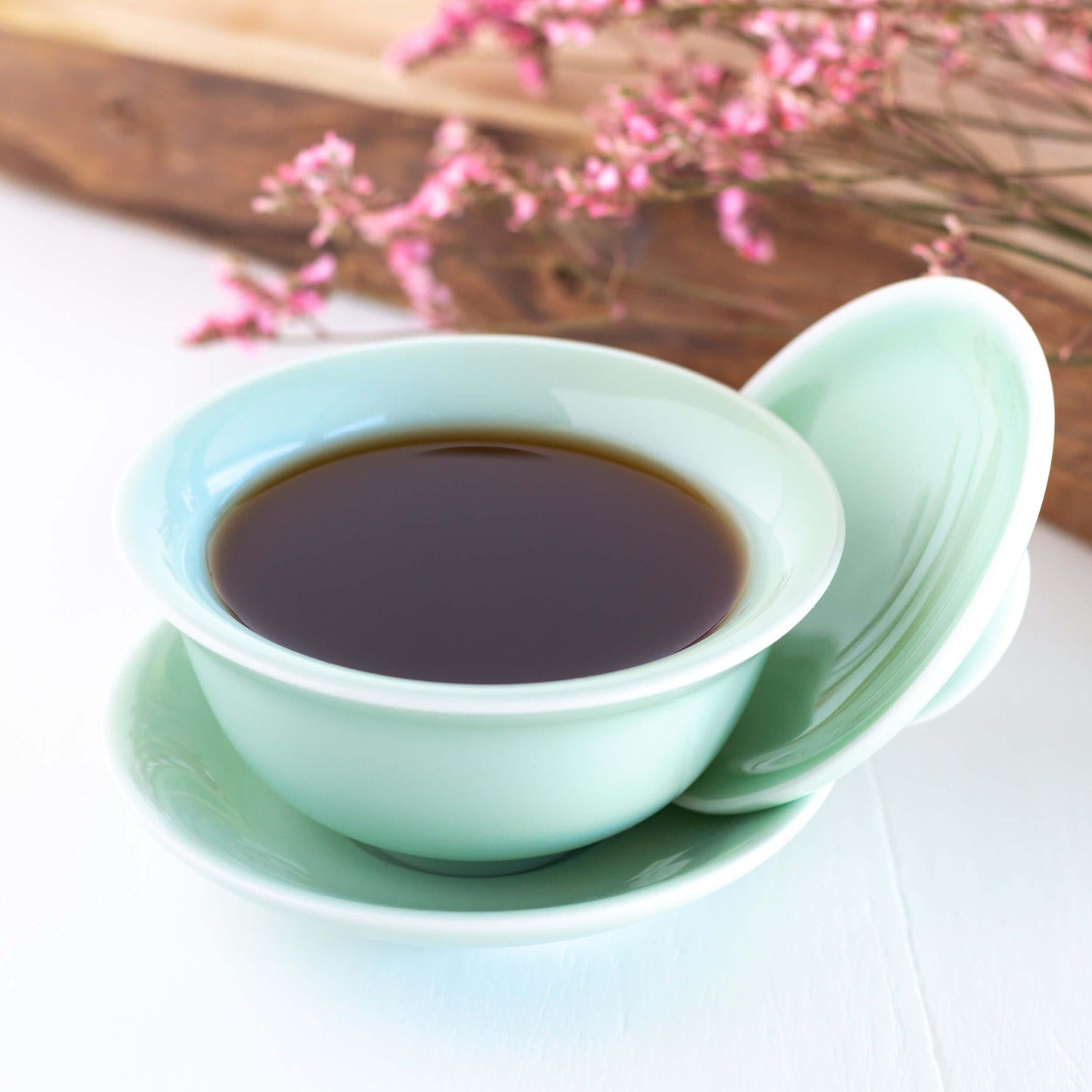What is pu-erh?
Pu-erh is an aged, partially fermented tea. In China, what westerners typically refer to as black tea is called red tea, with black tea referring only to teas such as pu-erh that are fermented and aged.
The tea is named after the city of Pu-erh in Yunnan province. Bordering Laos, Myanmar, and Vietnam in the southwestern part of China, Yunnan province had extensive trade ties to the west and throughout Asia during imperial times. Like other types of specialty foods, such as champagne or parmesan, only teas produced in Yunnan province can officially be called pu-erh. However, other provinces including Hunan and Guangdong provinces also produced similar aged teas. Much of the tea is still processed in the city of Pu-erh itself.
How ripe pu-erh (shou cha) is made
After being harvested, pu-erh tea leaves are dry-roasted in a process called “killing the green,” after which the tea is lightly bruised by rolling and rubbing, and then sun dried. The tea is then fermented. Shou cha, or ripened pu-erh, undergoes an accelerated process, similar to composting, by fermenting the tea in a humid environment over a time period of months to years. Although there is minimal heat involved in this process, ripe pu-erh is sometimes also referred to as “cooked” pu-erh.
How raw pu-erh (sheng cha) is made
After being roasted and sun-dried, sheng cha, or raw pu-erh, is pressed into cakes or bricks . It then undergoes a slower, traditional fermentation process, which can take many years. Similar to wine, raw pu-erh grows in the depth and complexity of its flavor as it matures, and often increases in both rarity and price with age. Raw pu-erh is sometimes also referred to as “green” pu-erh.
Differences between ripe and raw pu-erh
While both are tasty, unique aged teas, there are a few notable differences between ripe and raw pu-erh. These include:
1. Production method
The most obvious difference between these two teas is the manner in which they’re produced. Ripe pu-erh undergoes an accelerated fermentation process, while raw pu-erh is aged over a longer period of time.
2. Price
Because it takes a long time to produce, raw pu-erh can be much more expensive than ripe pu-erh. Raw pu-erh is often highly sought after by tea connoisseurs, which can increase the price.
3. Shape
Raw pu-erh teas are most commonly pressed into bricks, cakes, or disks. When the tea is ready to consume, pu-erh drinkers use a small knife to flake pieces of tea off the brick or cake. In contrast, ripe pu-erh is often still in loose leaf form, although it may also sometimes be pressed into bricks after it undergoes accelerated fermentation.
4. Flavor
While both types of pu-erh have a complex depth of flavor, raw pu-erh is often seen as even more nuanced in its flavor, while ripe pu-erh tends to have a bolder, less subtle flavor.
5. Appearance
Whether stored as loose leaf tea or in bricks, ripe pu-erh tends to be composed of darker tea leaves, and brews up into a dark, almost inky brew. Raw pu-erh leaves tend to be a lighter color, and brew up into a coppery gold cup of tea with a medium body.
Our pu-erh teas
We carry three different ripe pu-erh teas in our collection. For the sake of ease and convenience, these teas are sold in loose leaf form, which makes them easier to prepare using tea infusers or filters. All of our pu-erh teas are aged for five years.
Leaf Pu-erh
An earthy, rich flavor distinguishes this fermented tea. An excellent example of a plain, unflavored ripe pu-erh, this tea is best enjoyed on its own, without any milk or sweetener. Aged teas are thought to offer many health benefits as well as lots of antioxidants and moderate caffeine (about half that of a cup of coffee).
Caramel Pu-erh
This richly flavored dark tea combines the sweet decadence of caramel with the earthy, mustiness of an aged pu-erh to create something akin to dessert in a teacup. Smooth with a naturally sweet finish, this tea is warming and thick – perfect for an afternoon pick-me-up. This tea is high in antioxidants and has a moderate caffeine content (about half that of a cup of coffee).
Cinnamon Pu-erh
Cinnamon, ginger, and orange peel combine perfectly with pu-erh to create a purifying blend that also warms and restores you. This balanced blend not only has a delicious, rich flavor, but also offers benefits from ingredients traditionally thought to aid digestion and support health.
How to brew pu-erh tea
To prepare pu-erh teas using a Western preparation method, you should use approximately one teaspoon of tea leaves for every six ounces of water. Heat water until it has reached a full boil, then infuse the tea leaves for one to five minutes. Pu-erh prepared in this way can also be steeped multiple times.
Pu-erh is often prepared in a yixing pot or gaiwan using the traditional Chinese Gong Fu Cha method. With this method, you infuse the tea leaves for only a few seconds, then pour your tea into the small cups. Repeat this process, infusing the tea leaves for 10-15 additional seconds at a time before pouring the tea. Later infusions can steep for several minutes. Pu-erh teas prepared in this way can be infused many times, with each successive steeping producing a mellower flavor and exposing different nuances in the tea.
FAQs
What does pu-erh taste like?
Whether raw or ripe, pu-erh has a complex, nuanced flavor. Some people say that pu-erh tastes rich, smooth, smoky, mushroom-y, and earthy. Ripe pu-erh has a full body and a deep, dark color similar to coffee.
Is pu-erh tea black tea?
While produced from the same plant as black tea, pu-erh tea is a different type of tea. Pu-erh has a similar dark color to black tea, but is produced using a different method. Unlike black tea, pu-erh is aged and partially fermented. This results in a smoother, richer flavor, which has none of the tannic bite of a black tea.
How should you store pu-erh tea?
You can store pu-erh tea like you would any other loose leaf tea. It’s best to keep tea in an air-tight container in a cool, dark place, such as a drawer or cabinet. Pu-erh teas can be stored for a longer period of time than other types of tea without losing their flavor. In fact, pu-erh teas are said to develop increasing complexity.
Is raw pu-erh fermented?
Raw pu-erh is fermented, but it undergoes a much slower, more gradual fermentation process than ripe pu-erh. This can result in a lighter body and a more nuanced flavor.
How long is pu-erh aged?
How long pu-erh is aged depends on the type of pu-erh and the details of the specific tea. Ripe pu-erh may be aged for a few months to a few years or more. Raw pu-erh is generally aged for at least five to ten years, but often much longer.
